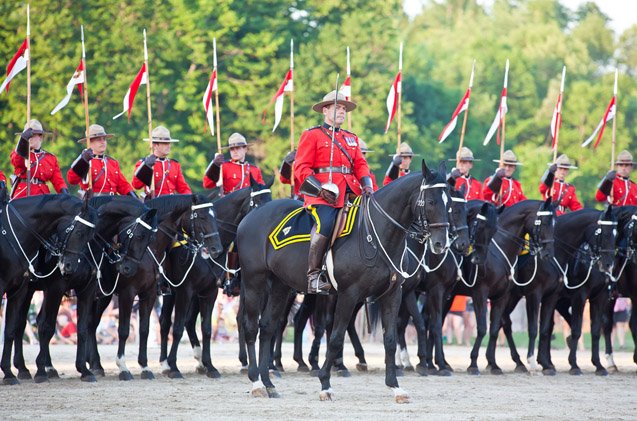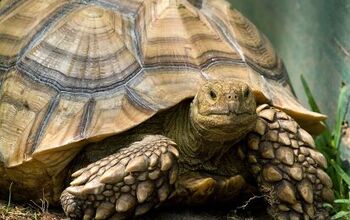Canadian Horse


About Canadian Horse
Also known as the Cheval Canadien, the Canadian Horse breed dates all the way back to the late 1600s, when King Louis XIV of France took Norman Horses and Breton Horses to Canada. It is believed that those two breeds led to the Canadian Horse, which also features similar characteristics to the Andalusian, Barb, and Arabian breeds. And, as a result of being exposed to harsh conditions, including few food sources, Canadian Horses developed into hardy, sturdy animals over time.
By the middle of the 1800s, Canadian Horses were found in both Canada and the United States. The horses were used to strengthen other breeds like the Tennessee Walking Horse, American Saddlebred, Standardbred, and Morgan breeds. And Canadian Horses were also exported to the West Indies and southern Africa, and they were used during the Civil War in the U.S. Three subtypes (pacing, trotting, and draft) were established during the time when this breed was most popular, but it is believed that they have all gone extinct since then.
The Canadian Horse is powerful and agile.
It was not until 1886 that the first studbook was created by individuals who were concerned about keeping the Canadian Horse breed alive. Then, in 1895, the Canadian Horse Breeders Association was founded.
Canada is proud of this horse breed as well. For example, this horse was named the country’s national breed by the Canadian Parliament in 1909. Much later, in 2002, the Canadian Horse became an official animal symbol for the country, And in 2010, Quebec’s provincial legislature named the Canadian Horse a heritage breed as well. Unfortunately, this breed is still considered critical according to the American Livestock Conservancy.
Canadian Horses are beautiful, strong horses that are known for being spirited and full of energy, as well as powerful. They are not known for being nervous horses; instead, they are considered docile and calm, so they are a good choice for all levels of horse owners and riders.
Because these horses are brave, energetic, and smart, as well as multi-talented and versatile, they can be used for everything from work and jumping, to hunting and endurance riding.
The Canadian Horse dates back to the late 1600s.
The strong Canadian Horse features a head that is carried high and is straight but rather short. The ears are thin, short, active, and set well apart, while the forehead is flat and broad. The eyes, too, are wide apart, as well as large, active, and bright. The neck is arched, with a top that is thin and a base that is broad, and it is of medium length and firmly muscled.
When looking at a Canadian Horse, you will also notice that the legs are well apart, while the chest is deep and broad. The withers are slightly raised and lean, while the back is straight, broad, and strong. Also, the shoulders are well muscled, sloping, and long, while the legs are proportionate, lean, large, and muscular. The tail and the mane are long and flowing, and the tail is high.
Overall, this equine breed is powerful and agile, thanks to its proportioned and balanced body.
The Canadian Horse is multi-talented and versatile.
Unlike other equine breeds, which could feature a variety of colors, patterns, and markings, the Canadian Horse does not showcase a wide array of coat colors. Instead, you can primarily find Canadian Horses sporting dark colored coats that include dark brown, bay, chestnut, or black. Chestnuts are more rare, though, and they may even feature flaxen tails and manes. And, rarely, these horses may even feature a gray coat.
The Canadian Horse features a coat that is shiny and soft. The long and thick mane is also beautiful and fun to groom, and spending time grooming your horse will also be a great opportunity to bond with your equine companion.
In order to help keep your Canadian Horse’s coat healthy and lustrous, invest in a basic grooming kit for horses. This will include all of the various tools that you will need to thoroughly clean your horse’s hooves and coat. For example, you could start with a curry comb, as moving it in circular motions along your horse’s body will help to remove various debris, as well as loose hair. You could then use a shedding blade, body finishing brush, and dandy brush to remove even more debris and excess hair, including on sensitive areas like the legs.
To keep the beautiful mane of the Canadian Horse looking lovely, use a mane comb. You can also untangle your horse’s tail with the appropriate tail comb. Then, to cleanse your horse’s face, simply moisten a soft cloth and clean the areas that surround the eyes and ears with it. To keep the hooves healthy and clean, a hoof pick will be necessary. And an equine shampoo that includes gentle ingredients could be used during those times when brushing is not enough.
Photo credit: V J Matthew/Shutterstock; N. Mitchell/Shutterstock; Phil McDonald/Shutterstock

Lisa Selvaggio is a freelance writer and editor, and our resident cats-pert, with certifications in pet nutrition and pet first aid. She enjoys producing content that helps people understand animals better so they can give their pets a safe and happy home.
More by Lisa Selvaggio

























